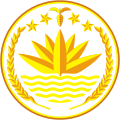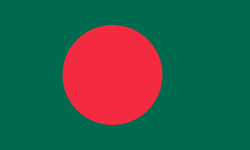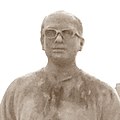| Vice President of the People's Republic of Bangladesh | |
|---|---|
| গণপ্রজাতন্ত্রী বাংলাদেশের উপ-রাষ্ট্রপতি | |
 | |
 | |
| Style |
|
| Status | Abolished |
| Abbreviation | VP |
| Residence | Jamuna State Guest House |
| Appointer | All Members of Parliament on the advice of the President of Bangladesh |
| Term length | Five years, renewable once |
| Formation | 17 April 1971 |
| First holder | Syed Nazrul Islam |
| Final holder | Shahabuddin Ahmed |
| Abolished | 6 December 1990 [a] |
| This article is part of a series on the |
| Politics of Bangladesh |
|---|
 |
| |
The Vice President of Bangladesh was the second highest constitutional office in Bangladesh when the country was governed under a presidential system. The vice-president was the first person in the presidential line of succession, in the event of a president's resignation, removal or death. The post was held by several Bangladeshi statesmen during different periods of the country's history. The inaugural office holder was Syed Nazrul Islam during the Liberation War and the final office holder was Moudud Ahmed before and during '90's Mass Uprising although Chief Justice Shahabuddin Ahmed was ceremoniously appointed on demand to the office by Ershad replacing Moudud Ahmed, so that Shahabuddin could constitutionally become acting president following Ershad's resignation in 1990. Abdus Sattar was the only vice-president to succeed to the presidency in 1981.
Contents
The office was first created in the 1971 Provisional Government of Bangladesh but abolished after the war when the new constitution founded a parliamentary republic. It was however reinstated only 3 years later in 1975 through the fourth amendment to the constitution which revived the presidential system as part of founding father Sheikh Mujibur Rahman's "Second Revolution" reforms. After the 3 November coup, the post was left vacant until President Ziaur Rahman assumed a long acting presidency in 1977. Another coup in 1982 vacated the post again all through the military government of Lieutenant General Hussain Muhammad Ershad until elections in 1986. The post was finally dissolved in the 1991 interim government by acting President Shahabuddin Ahmed after a constitutional referendum put into effect the twelfth amendment, which restored the parliamentary system.








